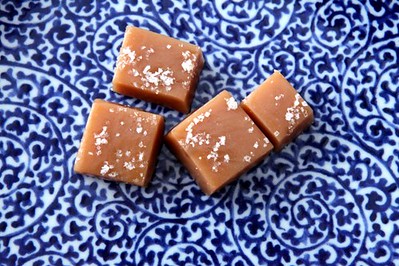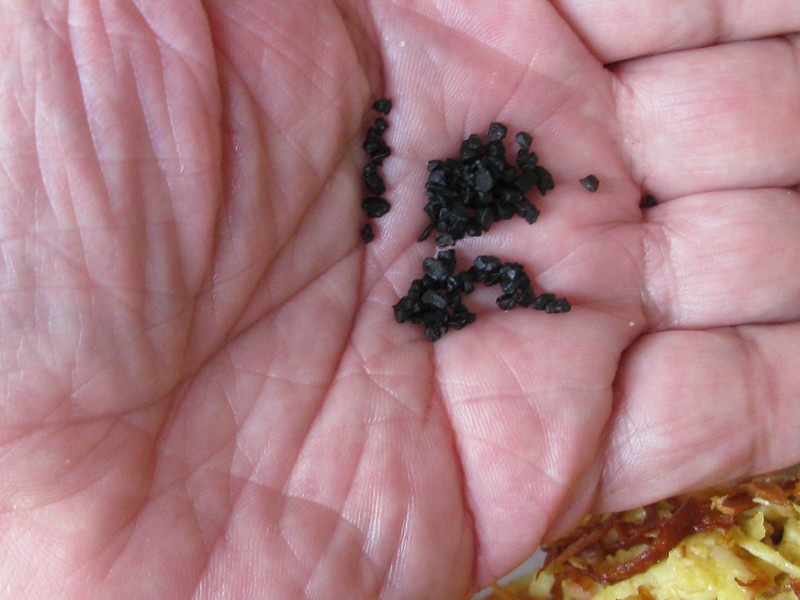Simple mineral salt is necessary for human life.
We couldn't survive without it, and our food would be much blander. Everything from steak to caramel cupcakes gets better with salt because it counteracts sweetness, brings out the subtle flavors in fat, and generally enhances everything. You might believe that salting your food simply entails turning a salt shaker upside down, but any seasoned chef will tell you that there is more to salt than that. There are various varieties of salt, and each one is best in particular circumstances. Others are better for bringing, while still others make for a lovely presentation when the cooking is finished. Some are excellent for seasoning meats.SYNOPSIS
Introduction
Almost every dish we prepare in the kitchen, including curries, desserts, salads, soups, etc., contains salt as an ingredient. In contrast, households typically use no more than two to three salt lists, and, likely, we aren't even aware that other varieties exist. Thus, after reading this article, you might feel amazed. Yes, as different salt varieties are used in other parts of the world. So why not explore the culinary landscape and learn to use a variety of salts? There are numerous salt varieties out there, and all have unique flavor profiles that can enhance any dish.
Different Salts
 |
| Image by 8photo on Freepik |
There are a few salts that every cook has to be familiar with. Table salt, or iodized salt, is probably the most common type of salt used in cooking. Kosher salt is another type of salt, and its coarseness makes it a favorite among chefs. Another popular salt is sea salt, which is generally considered to have a more intense flavor than other salts. Himalayan pink salt, though not as commonly used in the kitchen, has become popular over the past few years due to its unique flavor and attractive pink color.
Regular Salt
Table salt, or sodium chloride, is probably the most commonly used salt and can be found in salt shakers in restaurants worldwide. It comes from subterranean mines all over the world. Manufacturers then process it to remove contaminants, giving it a flawless white hue and a simple, salty flavor.
Manufacturers eliminate all minerals along with contaminants, eliminating any flavor complexity. However, most table salt in the US is iodine-fortified. Some chefs contend that the iodine imparts unwelcome flavors. A lot of cooks try to avoid using anti-caking chemicals, which table salt also contains.
 |
| Photo by Milada Vigerova on Unsplash |
Sea Salt
 |
| "Sea Salt Caramels and a Sticky Situation…" by kern. justin is licensed under CC BY-NC-ND 2.0. |
Rich sea salt is left behind when ocean water evaporates. Because it undergoes less processing and keeps trace minerals like iron, calcium, potassium, and magnesium, this kind of salt is popular with many people.
The flavor complexity that table salt lacks is made up for by these minerals. The coarse variety of sea salt is frequently offered, giving it a gritty sensation. This makes it a fantastic finishing salt for a variety of recipes. For a delicious crunch, sprinkle it on salads, grilled meats, and baked goods right before serving.
 |
| Photo by Jason Tuinstra on Unsplash |
Halal Salt
There is no such thing as a Rabbi's blessing for kosher salt. Even though its name might lead you to believe otherwise, kosher salt is excellent for removing moisture from the meat, making it the ideal ingredient for the koshering procedure. While table salt contains additives, kosher salt is additive-free and originates from the same underground salt mines.
 |
| "kosher salt" by crd! is licensed under CC BY-SA 2.0. |
Due to its huge crystal size, it is favoured by many cooks. The bigger crystals are perfect for seasoning and drawing out moisture from the meat. When you use larger crystals, you're less prone to salting your food excessively. Having said that, the crystals vary in size from brand to brand while always being larger than table salt. Therefore, finding the precise variety of kosher salt you like may take some trial and error.
Flavor of Sel
 |
| "fleur de sel caramels" by thepinkpeppercorn is licensed under CC BY 2.0. |
French sea salt, known as fleur de sel, is mostly produced in the Brittany region. The name, which means "Flower of Salt," is very appropriate. This salt is unquestionably delicate. In the area of origin, fleur de sel gathers on the surface of little saltwater pools. There is no mechanical means of harvesting, and the weather needs to be ideal for it to happen.
 |
| Image by Freepik |
Fleur de sel relies instead on manual harvesting. Due to all of this, salt is both expensive and scarce. Use fleur de sel as a finishing salt if you can get your hands on it. It tastes great on a wide range of foods, especially baked products. but it disappears shortly. So, always salt your dish right before serving to enjoy its soft, flaky texture.
 |
| "Foie Gras and Sauternes Duck Sausage with Truffle Aioli, Foie Gras Mousse and Fleur de Sel" by bryce_edwards is licensed under CC BY 2.0. |
Pink Himalayan salt
 |
| Photo by stephan hinni on Unsplash |
Areas close to the Himalayan Mountains are where Himalayan pink salt is found. That could mislead you into thinking it's table salt, which is not the case. Instead, Himalayan pink salt, a type of sea salt that is not found near the ocean, is made from the dried saltwater deposits of ancient seas. The salt's trace minerals give the hue pink.
These minerals impart a little earthy flavor to the salt. Despite scientists' claims that the amount of minerals obtained from salt is negligible, many people believe the minerals are beneficial to their health. Nevertheless, this salt can be found in a variety of non-food items, such as mineral lamps and spa treatments.
 |
| Image by 8photo on Freepik |
Hawaiian Black Salt
 |
| "Salt and Pepper - Sel et poivre" by fred_v is licensed under CC BY 2.0. |
Activated charcoal made from coconut shells gives black Hawaiian salt its deep hue. It is a distinctive and tasty variety of sea salt. Pork, scallops, and other native Hawaiian meals are complemented by the earthy flavor that the charcoal adds. In the meantime, the food's angular flakes give it a crunchy texture.
 |
| "black salt" by miheco is licensed under CC BY-SA 2.0. |
Additionally, because of its intriguing color, which gives each dish more visual complexity, high-end restaurants often use it as a finishing salt. Additionally, black Hawaiian salt frequently winds up on the lip of cocktail glasses, where it may give conventional drinks a completely different flavor. For the Hawaiian culture, you can make a one-of-a-kind lava flow or a margarita with a dark salted rim.
Rock Salt
 |
| "Rock salt crystals" by włodi is licensed under CC BY-SA 2.0. |
Of course, flake salt is flaky, as its name suggests. This type of salt is produced by manufacturers through a mechanical process that flattens regular sea salt into flakes. This increases the salt's surface area and decreases its density.
Flake salt adheres to food more effectively due to its greater surface area and lower density. Additionally, it mixes more evenly and dissolves more quickly than sea salt in dishes like creamy aioli or marinara sauce. Flake salt is also "pinchable," which chefs like because it gives them more seasoning control. It is simple to pinch a small amount between your fingers and sprinkle the ideal quantity over your dish.
 |
| "Rock salt (halitite) (Klodawa Salt Dome, Zechstein Formation, Upper Permian; Klodawa Salt Mine, central Poland) 2" by James St. John is licensed under CC BY 2.0. |
Irish Sea Salt
Unrefined sea salt with a grey tint is known as Celtic sea salt. The grey color derives from salt beds with clay linings in the Celtic Sea, right off the coast of France. Celtic salt may feel damp to the touch due to the mineral deposits that cause it to retain moisture.
Despite the fact that Celtic Sea Salt is believed to originate from the Celtic Sea, it's vital to remember that the word is unregulated, and many companies use it to market salt that they obtain from other sources. No matter where it is harvested, Celtic sea salt will have a robust, flaky texture. Therefore, it is perfect for completing meals. This makes it a well-liked skin exfoliator as well.
 |
| "Healthy Spices" by personaltrainertoronto is licensed under CC BY 2.0. |
Hawaiian Red Salt
 |
| "hawaiian red sea salt" by h-bomb is licensed under CC BY-NC-SA 2.0. |
Alaea salt, often known as "red Hawaiian salt," is a staple of Hawaiian cuisine. It contains both sea salt and volcanic clay. Red Hawaiian Salt's vibrant color and distinctive earthy flavor are a result of deposits of iron oxide in the clay. Alaea salt is frequently used in traditional Hawaiian foods like Kalua pork and poke, but to Hawaiians, it has a deeper purpose.
 |
| "Hawaiian Red Sea salt from Molokai. On broccoli because blizzard." by kate.gardiner is licensed under CC BY-NC 2.0. |
This salt was historically used by Hawaiians to cleanse and sanctify their equipment, canoes, temples, and homes. The red hue of Alaea salt is due to its rich mineral content, which includes iron oxide and trace amounts of other minerals such as calcium, magnesium, and potassium.
Rock Salt
 |
| Photo by Alfred Quartey on Unsplash |
The seawater that has evaporated is used to make flake salt. Salt comes in a variety of shapes and textures, and it is thin and light in weight with an irregular shape like a pyramid. This salt has a sparkly flavor and a low mineral concentration. Use: Typically used to season meats, seafood, baked items, and spice blends. This type of salt is known as flake salt, and its unique shape creates a burst of flavour when used in cooking.
Dark Salt
 |
| "grey sea salt, other treats from the meadow" by cafemama is licensed under CC BY-NC-SA 2.0. |
This salt is obtained from Atlantic tidal ponds in the Celtic Sea, off the coast of France. The minerals that are left over after the ocean evaporates are what give this salt its grey color. The ideal applications for it include roasting, grilling, and sautéing veggies in finished meals. Use: This product helps maintain healthy skin and remineralizes the body, making it useful for body baths and spa treatments. In addition, the grey Celtic salt has a mild flavor that allows it to be used as a finishing salt on dishes.
Smoked Salt
Salted Smoke Salt that has been smoked on bark-free wood is exactly what its name implies; the flavor of the salt depends on the type of wood used. Any salt with large granules can be used to make it. Additionally, smoked salt can be produced at home. Use: It is used to add a smoky, kinky flavor to food. for use as a stand-in in sauces, BBQ meals, stews, soups, etc.
Hawaiian Black Lava Salt
 |
| "Black Lava Salt" by feministjulie is licensed under CC BY-NC-ND 2.0. |
It is created from seawater that evaporates in bodies of water found on cooled lava flows. The crystals have been extracted and combined with detoxifying activated coconut charcoal. It has a nutty, dried-out flavor that makes it ideal for garnishing. It can be stir-fried or mixed into soups. Excellent for the skin, digestive system, and general health
Pickling Salt
This coarse salt variant lacks minerals, iodine, and caking agents. Because of its small granules and lack of additives, it is perfect for pickling. To keep moisture out and prevent clumping, pickling salt must be stored in an airtight container. Use: Fresh fruits and vegetables can be pickled or canned. The salt varieties and names mentioned above each have unique qualities, applications, and extraction techniques. As a result, you can select your preferred salt based on your demands and preferences.
CONCLUSION
The salt varieties and names mentioned above each have unique qualities, applications, and extraction techniques. As a result, you can select your preferred salt based on your demands and preferences. However, the list of salts stated above is the one that most people use around the world. As a result, salt has been an integral part of our lives for centuries, and it continues to have a variety of uses today. As far as its applications go, salt is used in cooking and baking, preserving and pickling foods, for industrial services like de-icing roads and softening water, and flavoring and seasoning food, among many other uses.






.gif)





0 Comments
Please do not enter spam links in the comment box.